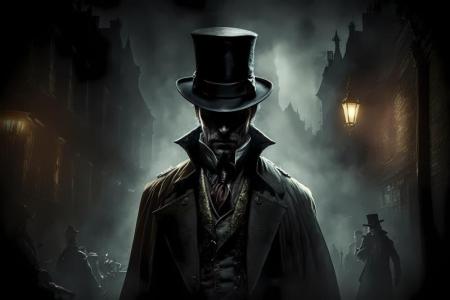Jack the Ripper is one of history's most infamous and mysterious serial killers. He operated in London during the autumn of 1888, specifically in the Whitechapel district, a poor and overcrowded area in the East End. This case has fascinated and terrified the world due to the brutality of the murders and the perpetrator’s unknown identity.
The Crimes
Jack the Ripper is credited with the murder of at least five women, known as the "canonical victims", although some believe he may have killed more. The confirmed victims were:
- Mary Ann Nichols (August 31, 1888)
- Annie Chapman (September 8, 1888)
- Elizabeth Stride (September 30, 1888)
- Catherine Eddowes (September 30, 1888, the same day as Elizabeth)
- Mary Jane Kelly (November 9, 1888)
All the victims were women, most of whom worked as prostitutes. The bodies were discovered in public places and showed severe mutilations, particularly in the abdominal area. In some cases, internal organs were removed, suggesting the killer had anatomical or surgical knowledge.
The Name and the Letters
The name "Jack the Ripper" comes from a letter sent to the police, allegedly by the killer himself, taunting the investigators and promising to continue killing. However, the authenticity of this and other letters remains debated.
One of the most famous is the "From Hell" letter, which came with a piece of a human kidney. This heightened the city’s terror and added a macabre element to the killer’s legend.
The Social Impact
Jack the Ripper's crimes generated unprecedented media frenzy. The sensationalist press followed the case closely, exposing the social inequalities and deplorable conditions in which London’s working class lived.
The police's inability to capture the killer drew criticism and sparked panic among citizens. Street patrols increased, and measures were taken to improve safety in dangerous neighborhoods.
The Suspects
Over the years, there have been hundreds of theories about Jack the Ripper’s identity. Some prominent suspects include:
- Montague John Druitt: A barrister and teacher who died shortly after the murders.
- Aaron Kosminski: A Polish barber with mental health issues.
- Walter Sickert: A British painter linked to modern theories.
- Prince Albert Victor: Grandson of Queen Victoria, though this theory has been debunked.
Despite numerous investigations and advancements in forensic technology, the killer’s identity remains a mystery.
The Legacy
Jack the Ripper has become a cultural icon, inspiring books, films, documentaries, and plays. His story combines elements of horror, mystery, and crime, keeping him alive in the public imagination.
The case continues to be studied by historians, criminologists, and true crime enthusiasts, who remain captivated by the enigma of this murderer who haunted the dark streets of Whitechapel.








